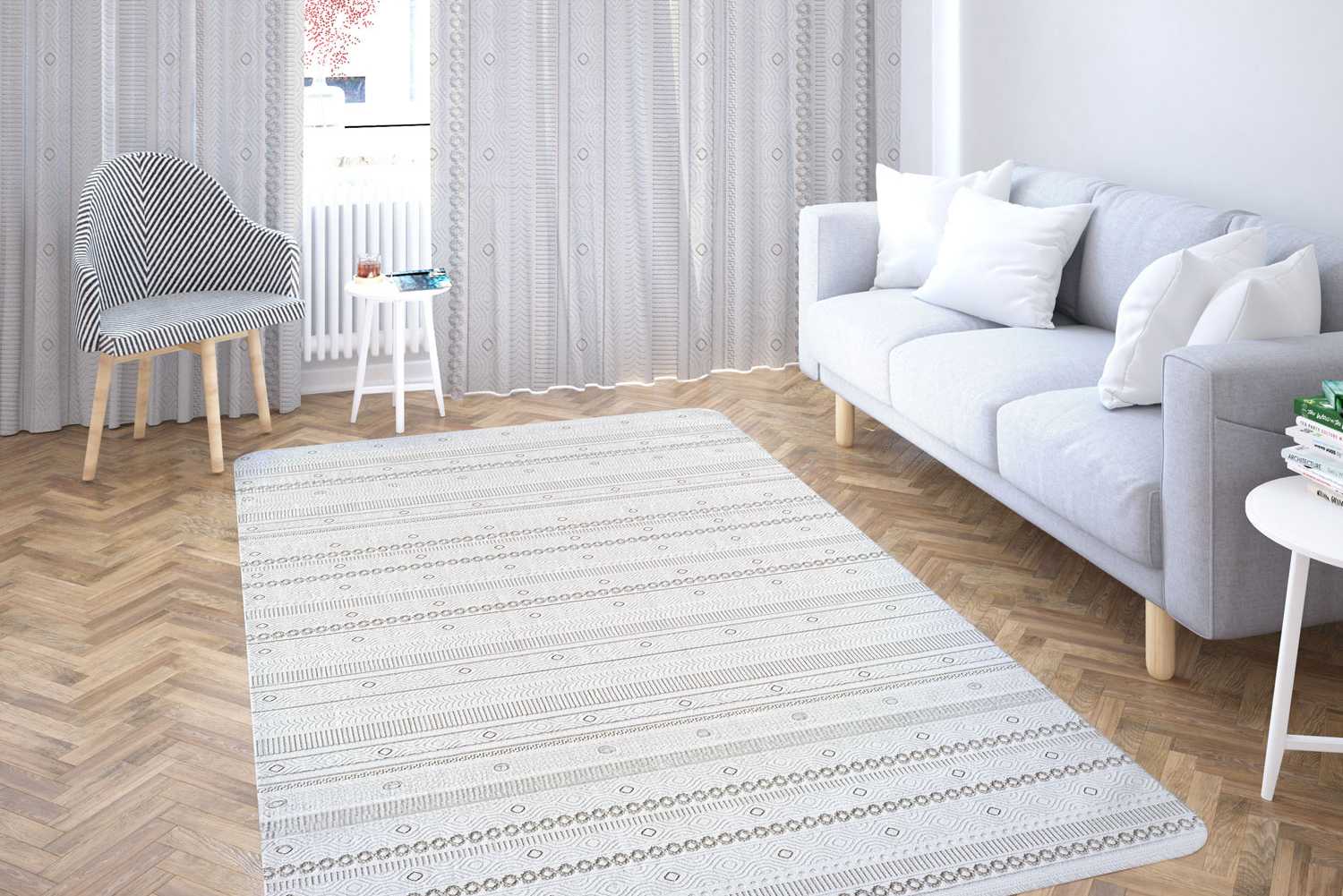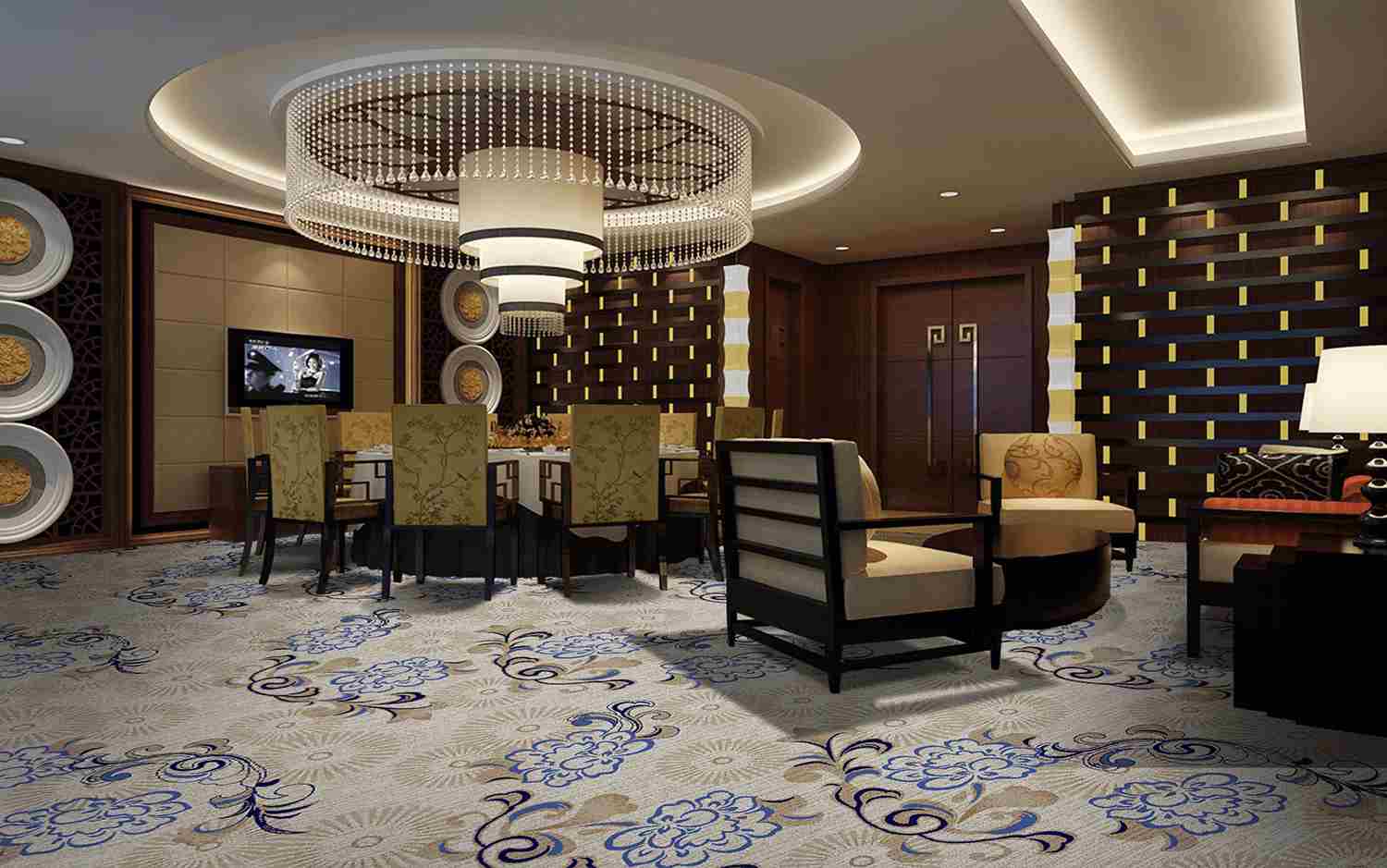
it's important to choose a carpet color that coordinates with the home and shares the same color family. Depending on the wall color of the room, you can choose a warm, cool, or greige carpet.
If the walls are warm-toned, it's recommended to stick with earth-tone colors such as beige, cream, or brown for the carpet. These colors complement the warm walls and create a cozy atmosphere in the room.
For cool or grey walls, you should opt for a cooler colored carpet such as shades of blue or green, or even a silver or grey color. These colors provide a cool and refreshing ambiance to the room, creating a calming effect.
Lastly, if you want a carpet that can work with both cool walls and warm walls, a greige colored carpet can be an excellent middle of the road neutral color. Greige is a combination of grey and beige, and it can work well in both warm and cool colored homes. Taupe is another option in this color family that can also work as a neutral base for the room.
Ultimately, the choice of carpet color will depend on your personal preference and the overall style of your home. It's always a good idea to bring home carpet samples and test them against your walls and furnishings to ensure you're happy with the final result.
Lighter colors, such as beige or light grey, can make a room feel larger and more open due to their reflective qualities. They reflect more light and can make a space feel brighter, which can help create an airy and spacious feel. However, lighter colors can also show dirt and stains more easily, which may require more frequent cleaning.
On the other hand, darker colors such as navy, charcoal, or brown can add a cozy and sophisticated feel to a room, and they tend to hide dirt and stains more easily. This is particularly advantageous for households with kids or pets, as spills and messes can be more easily camouflaged. However, darker colors can also make a room feel smaller and may not be the best choice for rooms with limited natural light.
Ultimately, the choice between lighter and darker colors will depend on your personal preference and the specific needs of your household. If you value the look of a spacious room and are willing to put in a bit more effort to keep your carpet clean, a lighter color may be the best choice for you. If you prioritize ease of maintenance and a cozy, warm atmosphere, a darker color may be a better fit.
What Color to Choose First?
Create an elegant and minimal space, it's not necessary to match the rug color to the wall color or flooring. Instead, you would want to choose a rug color that coordinates with the home and shares the same color palette.
One approach to selecting a rug color is to look for colors that complement the dominant colors in the room. For example, if your walls are painted in a cool shade of blue, you might choose a rug in a warm shade of cream or beige to add a contrasting element to the space. Alternatively, you could choose a rug with a complementary color, such as blue's complementary color, orange.
Another approach is to use the rug as a statement piece in the room. If your walls and floors are neutral, you could choose a rug in a bold color, such as red or teal, to add visual interest and create a focal point in the room.
Overall, the key is to choose a rug color that complements the overall color scheme of the room, rather than matching it exactly. By selecting a rug that coordinates with the home and shares the same color palette, you can create an elegant and minimal space that feels cohesive and harmonious.
Understanding Your Needs and Preferences
- Identifying your lifestyle
- Considering your existing home decor
- Identifying your color preferences
- Exploring different color schemes
Black, white, and earth tones are versatile and aesthetically pleasing colors that can work with a wide range of styles. These colors have stood the test of time and remain popular choices for rugs and other home decor.
It's also true that unless you have the resources to replace your rugs frequently to keep up with new trends, it's best to choose a neutral color for your rug. Neutral colors such as beige, warm gray, and taupe can work with a variety of different styles and can easily be paired with other colors and patterns in your decor. This makes them a smart choice for homeowners who want a rug that can stand the test of time and remain stylish for years to come.
That being said, it's always a good idea to keep an eye on current trends and incorporate them into your decor as you see fit. While neutrals are a safe and timeless choice, adding a pop of color or pattern to your rug can help to inject some personality and visual interest into your space. Just be sure to choose a rug that you love and that coordinates with the overall color scheme and style of your home.
Matching Carpet Color with Room Functionality
- Choosing colors based on room traffic
- Considering lighting in the room
- Deciding on the desired mood
Understanding the Impact of Carpet Colors
Color can have a significant impact on moods, feelings, and emotions, and it's important to carefully consider the colors you use in your home when setting the overall mood and tone of a space.
When it comes to flooring, carpet can offer a wide range of color options, from deep blues and bold patterns to neutral beige and subtle shades of green or yellow. This versatility makes carpet a great choice for homeowners who want to create a specific mood or atmosphere in their space.
For example, if you want to create a cozy and inviting atmosphere in a living room or bedroom, you might choose a plush carpet in a warm shade of beige or taupe. This can help to create a sense of comfort and relaxation, and can be further enhanced by adding soft lighting and warm textiles.
Alternatively, if you want to create a bold and dramatic statement in a space, you might choose a carpet in a deep shade of blue or a bold geometric pattern. This can help to create a sense of energy and excitement in the room, and can be balanced out by pairing it with more neutral furniture and decor.
Ultimately, the colors you choose for your carpet should reflect your personal style and the mood you want to create in your space. By carefully considering your color choices from the ground up, you can create a cohesive and harmonious home that feels both comfortable and stylish.
What Type Of Carpet Is The Most Durable And Easiest To Keep Clean?
Nylon carpet fibers are known for their strength and resilience, making them a popular choice for high-traffic areas in homes and businesses.
One of the key benefits of nylon carpet is its ability to bounce back to its original shape after being cleaned or after heavy foot traffic. This means that nylon carpets can maintain their original appearance and durability for many years, even in high-use areas like hallways and entryways.
Nylon is also known for its stain resistance, making it an excellent choice for homes with pets or young children. Many nylon carpets are treated with stain-resistant coatings that help to repel spills and prevent staining, making them easy to clean and maintain.
Overall, if you're looking for a durable and easy-to-clean carpet material, nylon is a great choice. Its strength, resilience, and stain resistance make it a practical option for a wide range of homes and businesses, while its versatility in terms of color and style options allows you to create a look that fits your personal style and decor preferences.
Polyester is a great choice for homeowners looking for stain-resistant carpeting. Polyester carpet fibers are oil-based, which helps them repel water-based stains like spills and pet accidents.
Pet owners in particular may find polyester carpeting to be a good choice, as it can be more resistant to stains and odors caused by pets than other types of carpeting. This is because polyester fibers are less absorbent than other materials, which makes it more difficult for stains and odors to penetrate the fibers and become trapped.
Polyester carpeting also offers other benefits, such as softness and comfort underfoot. Additionally, polyester is often less expensive than other types of carpeting, making it a budget-friendly choice for homeowners.
However, it's worth noting that polyester carpeting may not be as durable as some other materials, particularly in high-traffic areas. Over time, the fibers may start to mat down and lose their original texture and appearance. Additionally, polyester carpeting may not be the best choice for areas with high heat or moisture, as it can be more prone to fading or developing mold and mildew.
Overall, polyester carpeting can be a great choice for homeowners looking for an affordable and stain-resistant option that is particularly well-suited for pet owners. However, it's important to consider the potential drawbacks and weigh them against the benefits before making a final decision.
Polypropylene (also known as olefin) is a durable and easy-to-clean carpet material. Polypropylene fibers are known for their colorfastness, which means they are less likely to fade or lose their original color over time. They are also abrasion-resistant, which means they can withstand heavy foot traffic without showing signs of wear and tear.
In addition to their durability, polypropylene fibers are also resistant to moisture and mildew, which makes them a good choice for homes in wetter climates or areas that are prone to moisture buildup. This resistance to moisture also makes polypropylene carpeting easy to clean, as spills and stains are less likely to penetrate the fibers and become trapped.
One potential drawback of polypropylene carpeting is that it may not be as soft or plush underfoot as other materials, such as nylon or polyester. This is because the fibers are often more rigid and less flexible than other materials.
Overall, if you're looking for a durable and easy-to-clean carpet material that can withstand heavy foot traffic and resist moisture and mildew, polypropylene may be a good choice. Its colorfastness and abrasion resistance make it a practical option for high-traffic areas. Additionally, its resistance to moisture makes it a good choice for homes in wetter climates or areas with high humidity.






